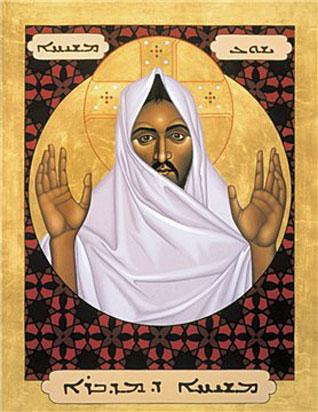Daily Fix
When Stones Weep
T. SHER SINGH
Not too long ago, it was reported that a 12th century painting of Christ, hanging at the blessed spot in Bethlehem where he is said to have been born, had been observed to be weeping. Real tears, witnesses said, were seen pouring down its cheeks.
Hm-mm. Is anybody surprised?
In view of all that people do today in the name of religion - every religion! - it is no small miracle that religious icons haven't burst into tears everywhere.
I remember one day, waiting for court to resume after lunch, I went for a stroll around the block. Feeling drawn by the open door of a church as I sauntered by, I turned around and entered. I sat down in a pew a few rows from the altar. It was a place of worship: I felt at home.
A giant representation of Christ looked down on me from behind the high altar. The face was serene, its flawless pinkish skin haloed by shoulder-length blonde hair. The bluish eyes pierced the distance between us.
My thoughts wandered. And I wondered at how the human mind turns a simple, pure idea into a cat's cradle.
I think of all those who claim ownership of this extraordinary man whose message was direct, straightforward and uncluttered: "Love thy neighbor..." I think of all of those who now use his name to sell the oddest combinations of ideas and concepts.
Not long ago, I remember, a handful of good souls announced the formation of a Christian Coalition in the area where I live, with the stated desire to make inroads into the political arena. The coalition hoped to get its strength from the American experience and duplicate the latter's achievements right here in Canada.
The concerns of the new group were many, but not dissimilar to those troubling our friends south of the border: immigrants, the mixing of races, single parenthood, citizens on public assistance, the position of the English language, the influx of "other" faiths ...
I mused at how anybody who claims to seek spiritual strength from the memory of Christ could manage to become comfortable in any group that finds itself at loggerheads with women, the poor and unemployed, immigrants and refugees, blacks and other racial minorities, and ah yes, the followers of other faiths.
How in heaven's name, I wondered, do people begin here and end up there?
The blessed figure depicted before me never spoke a word of English or French when he walked the earth. Pray, tell me, how then did this icon become the source of inspiration for those who claim privileges for English-speaking peoples, for example, or superior rights for any motley crew that can assemble a few souls one evening in some hole in the wall, nursing a gripe?
Born a Jew, Jesus lived and preached in the Middle East all his life. How, then, did he turn into a pillar of strength for those who spew hatred against Jews and Muslims, or anybody not of European descent? Or hatred for anyone who doesn't conform to the flavour or fashion or trend of the day?
Experts tell us his physical features were anything but those displayed before me: his hair, eyes, skin color, the very sculpt of his face.
I once received a treatise - originally obtained by the donor from Billy Graham, she assured me - entitled Manner and Customs of Bible Lands. [I should add: my correspondent described herself in a covering letter as a devout Christian belonging to a nearby parish, but asked me to refrain from identifying her - she was terrified of being shunned by her church for having sent me this book.]
In a chapter called "The Dress of Christ", the author states - and I quote verbatim:
"Upon His head He must always have worn the turban, the national headgear ... Under His turban He wore His hair rather long, and His beard uncut."
Now, tell me - someone, anyone, please! - how then did a few so-called followers of Christ acquire the moral right to persecute those who wear turbans, long hair and unshorn beards, not unlike Christ himself; or to oppress those whose skin is tanned, like Christ himself; or discriminate against those with ethnic features that are closer to Christ's own than to any Anglo-Saxon combination?
Pray, how did the icons of this personage who was born in a foreign land, looked like a foreigner, spoke in a foreign tongue and practiced a foreign faith - the classic indicia of an "alien", George - how then did they get installed in this land so as to also become the source of strength for many of those who would exclude anybody and everybody whose traits can somehow be branded "foreign"?
And yet, we wonder why an icon of Christ has begun to weep in Bethlehem.
[Bottom Image: Christ as depicted by the Syriac tradition in the Middle-East.]
First published on sikhchic.com on March 4, 2007.
Republished on May 14, 2013.
Conversation about this article
1: Quintin Rozario (Brisbane - Australia), March 06, 2007, 4:43 AM.
There is some doubt now that Christ lived all his life in the Middle-East. There is compelling evidence he lived in India during his final years.
Your question about the issue of the turban and the heretics from "south of the border" is simply answered thus:
It is called labelling. If you have the money and the brute force to back it, you could call white black and black green and no one will question you. The king has no clothes.
Long may the Sardar wear his turban with the pride it richly deserves.
2: Prabhu Singh Khalsa (Española, New Mexico, USA), March 21, 2007, 12:23 PM.
Excellent article! When I was a child, outside the home I was a different race and religion from all those who surrounded me. I remember questioning why 'Christians' made fun of me and abused me so much. I thought, 'If Adam and Eve were the parents of humanity, then surely we're all brothers and sisters!' I also thought of the Golden Rule and how I just wanted to be friends with people. Over 90% of my experiences with so called faithful or practicing 'Christians' has been negative. Sadly, I cannot look at a cross or hear the name "Jesus" or "Christ" without feeling awful. I'm trying to change that, but even with years of meditation, it's hard to undo a lifetime of conditioning. I hope that my children are not conditioned by 'Christians' to feel bad. Then they too can appreciate the message of Christ. I like the picture accompanying this article showing Jesus in his most famous yogic asana (posture) and mudras (hand positions). I believe that he did live in (what became)India, possibly after the cross, and that he practiced and taught yoga.
3: roopinder (surrey), March 24, 2007, 4:07 PM.
My understanding is that all semitic prophets wore turbans.
4: Alaa Eissa (Windsor), September 08, 2007, 1:45 AM.
This is the best article I have ever read about racism based on religion, color, ethnicity and national origin. The author has used the real description and history of Jesus in a very convincing way and, in doing so, himself sounds like a great philosopher.
5: Baldev Singh (Bradford, United Kingdom), May 14, 2013, 12:55 PM.
In Sikhi, we have a practical approach to faith: there are no prophets, saviours, rituals, miracles, magic, etc. ... only The One.




